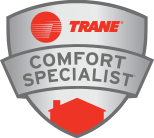It isn’t cheap to heat and cool the air you circulate through your home every day. In fact, heating and cooling can be the most expensive energy related systems you operate. So, the last thing you want is to open a window and pour all of that conditioned air into the great outdoors.
That’s why most modern homes are sealed up so tightly. The heated and cooled air you enjoy so much needs to be retained, both to save money and to reduce your energy use. It’s why the government offers credits for things like insulation upgrades and the purchase of more energy efficient comfort systems.
But, while sealing everything saves you money and reduces your energy use, it can negatively impact your indoor air quality. Without proper circulation and ventilation, the air in your home grows thick with indoor contaminants like pet dander, pollen, dust, and possibly even bacteria or gasses. Normally, these things would be circulated outside through traditional ventilation. But, because of your heating and cooling system, the age old method of cracking a window to let a little fresh air in just doesn’t work anymore.
An energy recovery ventilator solves this problem. Instead of just pouring heated or cooled air outside and replacing it with fresh air, an energy recovery ventilator passes the air through a series of chambers. Within those chambers the heat is transferred from the warmer air to the cooler air.
In the winter, this means the indoor air passes its energy to the incoming air, retaining the heat your furnace or boiler generated. In the summer, the air coming in from outside passes its heat energy to the cooled indoor air as it leaves and only cool air enters your home.
In effect, an energy recovery ventilator works to reduce the cost of both heating and cooling. It is true that most indoor air quality systems are designed to remove many of the contaminants you flush outside, but relying solely on your air purifier or filter puts undue stress on the equipment. Not only will you need to replace filters and cartridges more often, you may need to replace the entire system earlier than you would otherwise. If you’re tired of losing all that conditioned air just to get a fresh breath, look into these amazing machines for your indoor air system.


